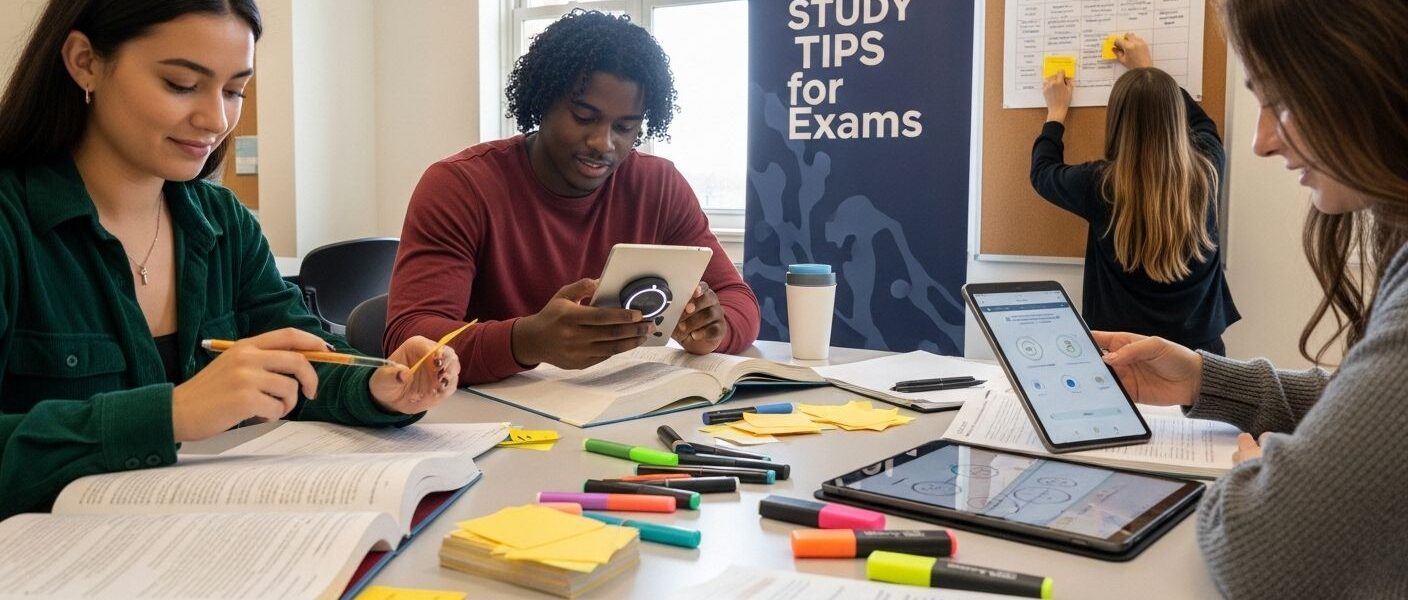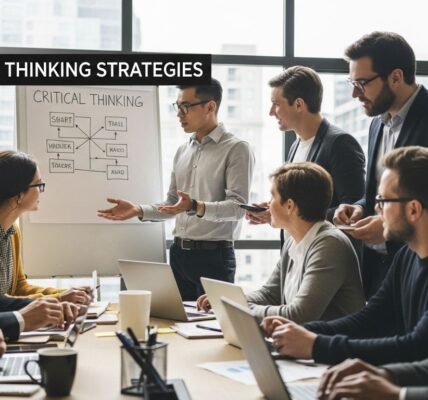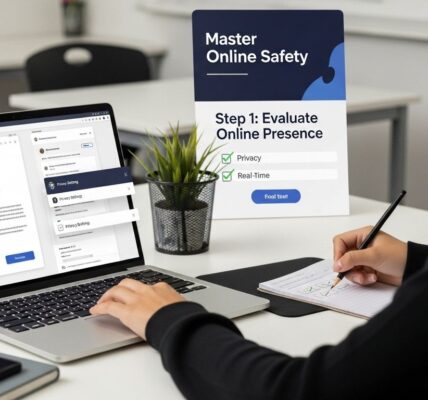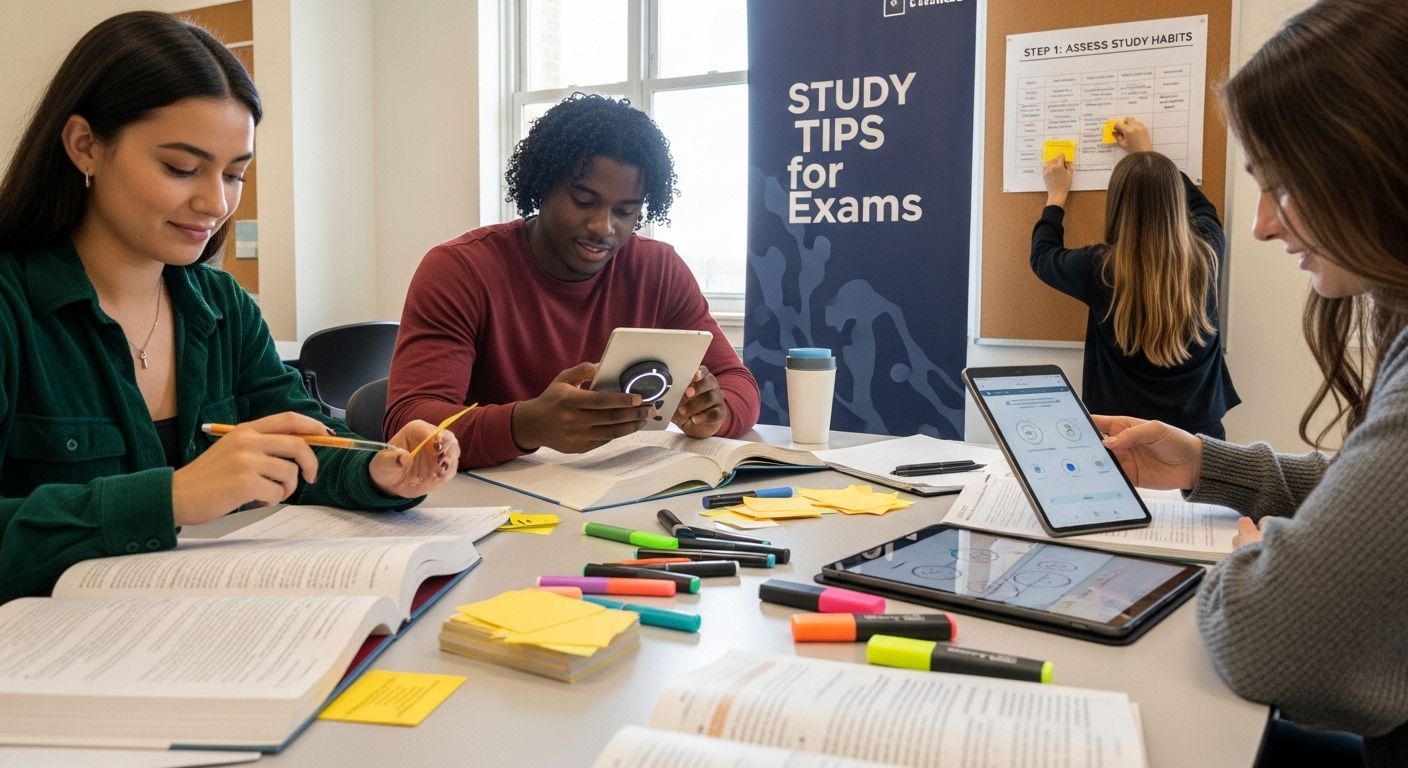
Figuring out how to actually study well can feel overwhelming and random. Most students fall into habits like inconsistent study times or passive reading, which rank among the top reasons for underperformance. Sounds familiar, right? Yet routines that look productive on the surface are often the biggest obstacles to getting better grades. The real shift starts with spotting these hidden problems and building strategies that finally fit you—not everyone else.
Quick Summary
| Key Point | Explanation |
|---|---|
| 1. Assess Your Study Habits | Track and evaluate your study habits to pinpoint weaknesses that need improvement. |
| 2. Create a Structured Schedule | Design a personalized timetable that aligns with your energy levels and commitments. |
| 3. Match Techniques to Learning Styles | Identify your learning style and use techniques that cater to how you absorb information best. |
| 4. Practice Active Review Sessions | Engage in interactive review methods like self-quizzing to deepen understanding and retention. |
| 5. Test Yourself with Exams | Use practice exams to simulate test conditions, identify gaps, and boost confidence in your knowledge. |
Step 1: Assess Your Study Habits and Identify Weaknesses
Successful exam preparation starts with honest self-reflection. Before diving into complex study strategies, you need to understand your current learning approach and pinpoint areas where you struggle. This crucial first step transforms random study attempts into targeted, effective learning sessions.
Begin by creating a comprehensive study log that tracks your current habits. Spend one week documenting everything related to your study routine: when you study, how long you study, what distractions interrupt you, and your comprehension levels after each session. This detailed record becomes your personal roadmap for improvement.
As you analyze your log, look for specific patterns that might be undermining your academic performance. Common weakness indicators include inconsistent study times, frequent interruptions, passive reading without active engagement, and studying in high-distraction environments. For instance, if you discover you only study late at night when you are exhausted, or that you constantly check social media during study sessions, these are clear signals that your current approach needs refinement.Learn more about optimizing your study techniques to complement your self-assessment process. Identifying weaknesses is not about criticism but about creating a personalized strategy that matches your learning style and energy patterns.
To validate your assessment, ask yourself key diagnostic questions: Can you recall the material you studied just days earlier? Do you feel confident or anxious when preparing for exams? Are your current study methods producing the grades you want? Answering these questions honestly will help you recognize genuine areas for improvement.
This table outlines common study weaknesses, their causes, and improvement strategies as discussed in the self-assessment step to help you identify and address typical challenges.
| Weakness Example | Possible Cause | Improvement Strategy |
|---|---|---|
| Inconsistent study times | Lack of routine | Build a structured schedule with fixed times |
| Frequent interruptions | Studying in high-distraction areas | Choose quieter environments, silence devices |
| Passive reading without engagement | Relying solely on textbooks and notes | Use active techniques like self-quizzing |
| Studying when exhausted | Choosing low-energy periods to study | Align study sessions with peak energy hours |
| Multitasking with social media | Lack of focus, phone distractions | Remove digital distractions during study blocks |
Remember, the goal of this assessment is not perfection but progress. Every student has unique learning challenges, and recognizing them is the first step toward developing a more effective study approach that aligns with your individual strengths and learning preferences.
Step 2: Create a Structured Study Schedule
Transforming your study habits requires more than good intentions. A structured study schedule turns random learning attempts into purposeful, consistent progress. This step is about designing a personalized roadmap that maximizes your study efficiency while respecting your individual energy levels and commitments.
Start by mapping out your current weekly obligations. Take a blank calendar and block out non-negotiable time slots like classes, work shifts, family responsibilities, and essential personal activities. What remains are your potential study windows. The key is not just finding time, but selecting times when you are most alert and focused. For some students, this might mean early morning hours before campus activities begin. For others, late evening hours after daily responsibilities wind down might offer the most uninterrupted concentration.
Design your schedule with strategic variety and realistic expectations. Allocate specific time blocks for different subjects, ensuring you rotate between challenging and more manageable coursework. This approach prevents mental fatigue and keeps your study sessions engaging. For instance, if mathematics requires intense concentration, pair it with a more reading-based subject like history to provide mental variety. Discover advanced techniques for maintaining study momentum that can help you stick to your newly created schedule.
To verify your schedule’s effectiveness, track your adherence and academic performance over two weeks. Ask yourself critical questions: Are you consistently following the schedule? Do you feel more prepared for upcoming exams? Are your study sessions feeling more productive and less overwhelming? Your answers will help you make necessary adjustments.
Remember that a study schedule is a living document. Flexibility is crucial. If certain time slots consistently prove challenging to maintain, be willing to redesign your approach. The goal is creating a sustainable rhythm that supports your learning, not adding another source of stress to your academic journey.
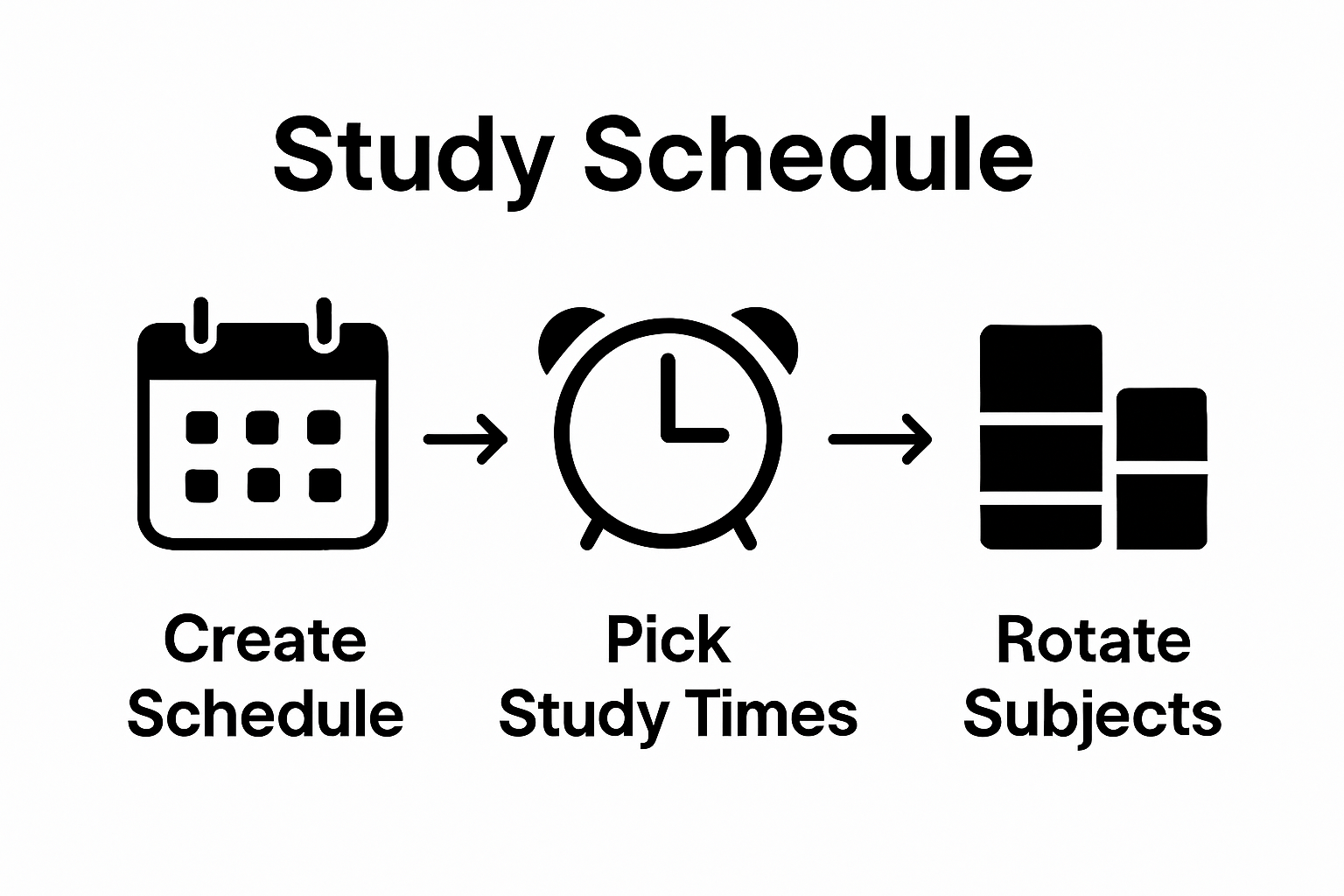
Step 3: Choose the Right Study Techniques for Your Learning Style
Understanding your unique learning style is the cornerstone of effective study strategies. Not every student absorbs information the same way, and recognizing your personal learning approach can dramatically transform your academic performance. The goal is to match study techniques with your natural information processing preferences.
Start by identifying whether you are a visual, auditory, reading/writing, or kinesthetic learner. Visual learners thrive with diagrams, charts, and color-coded notes. If you remember information better when you see it graphically represented, create mind maps, use colored highlighters, and draw visual connections between concepts. Auditory learners, by contrast, benefit from verbal explanations, recorded lectures, and discussing topics out loud. Try recording your study sessions, explaining concepts to friends, or using text-to-speech applications to hear your study materials.Explore advanced learning strategy techniques that can help you customize your approach. For reading/writing learners, traditional note-taking and extensive reading work best. Create detailed written summaries, rewrite complex concepts in your own words, and use written practice tests. Kinesthetic learners need movement and hands-on experiences. Design study techniques that involve physical interaction like creating 3D models, using flashcards with physical sorting, or studying while walking or using a standing desk.
To verify your chosen techniques are working, track your comprehension and retention rates. After implementing your personalized learning strategy, assess whether you are remembering more information, feeling more confident during study sessions, and performing better on practice tests. The right study technique should make learning feel more natural and less like a chore.
Here is a comparison of study techniques matched to different learning styles described in the article to help you choose the most effective approach for your needs.
| Learning Style | Key Features | Recommended Techniques |
|---|---|---|
| Visual | Learns best through images and visuals | Mind maps, diagrams, color-coded notes |
| Auditory | Prefers listening and speaking | Recorded lectures, verbal explanations, discussions |
| Reading/Writing | Absorbs through text and writing | Written summaries, rewriting notes, practice tests |
| Kinesthetic | Benefits from movement and hands-on work | Flashcards, physical sorting, studying while moving |
Remember that learning styles are not rigid categories. Most students are a combination of different styles, so experiment and remain flexible. Your perfect study approach will evolve as you understand yourself better, transforming study time from a dreaded task into an engaging, personalized learning experience.
Step 4: Practice Active Learning Through Review Sessions
Active learning transforms passive information absorption into dynamic knowledge retention. Unlike traditional rereading methods, active review sessions engage your brain through interactive techniques that deepen understanding and improve long-term memory. The goal is to move beyond simple memorization and truly comprehend the material.
Begin by creating structured review sessions that simulate real exam conditions. Instead of passively reading notes, challenge yourself with practice questions, self-quizzing, and teaching concepts to imaginary students. This approach forces your brain to retrieve and reconstruct information, strengthening neural connections. For example, after studying a complex topic, close your study materials and attempt to explain the entire concept as if you were teaching someone else. This method exposes knowledge gaps and reinforces your understanding.Discover smart learning strategies that can enhance your review techniques. Incorporate varied review methods like creating concept maps, developing summary sheets, and recording verbal explanations of key topics. Use digital tools or physical flashcards that encourage active recall. Practice switching between different subjects during review sessions to keep your brain agile and prevent mental fatigue.
To verify the effectiveness of your active learning approach, track your performance through periodic self-assessments. Look for clear indicators of improvement: Are you answering practice questions more confidently? Can you explain complex topics without referencing your notes? Are your test scores showing consistent progress? These metrics will help you refine your review strategy and identify areas requiring additional focus.
Remember that active learning is a skill that improves with practice. Be patient with yourself, embrace mistakes as learning opportunities, and continuously adapt your review techniques. The most successful students view study sessions not as a chore, but as an opportunity to genuinely understand and master their subject matter.
Step 5: Test Yourself with Practice Exams
Practice exams are your secret weapon in exam preparation, transforming theoretical knowledge into practical mastery. These simulated tests do more than measure your current understanding they reveal your learning strengths and expose critical knowledge gaps. By systematically working through practice exams, you build confidence, improve time management skills, and develop a strategic approach to test-taking.
Begin by collecting past exams, online practice tests, and study guides from multiple sources. Textbook companion websites, academic forums, and school resources often provide comprehensive practice materials. When taking these practice exams, recreate actual test conditions as closely as possible. Choose a quiet space, set a timer matching the real exam duration, and eliminate all potential distractions. This approach trains your brain to perform under genuine test pressure, reducing anxiety and improving focus during the actual exam.Explore comprehensive exam preparation techniques that can help you maximize your practice exam experience. After completing each practice test, do not just review your score. Conduct a detailed analysis of every question, especially those you answered incorrectly. Understand why you missed specific questions by tracing back through your study materials, identifying the exact concepts that need reinforcement. Create a personalized error log that tracks recurring mistakes, allowing you to develop targeted study strategies.
To verify your progress, track your practice exam performance over time. Look for consistent improvement in your scores, reduced time spent on challenging questions, and increased confidence in your answers. Pay attention to patterns in your mistakes. Are they concentrated in specific subject areas? Do you struggle more with complex problem-solving or basic recall? These insights will help you refine your study approach and focus your remaining preparation time more effectively.
Remember that practice exams are learning tools, not just performance metrics. Embrace each test as an opportunity to grow, learn from your mistakes, and develop the mental resilience needed to excel in high-pressure academic environments.
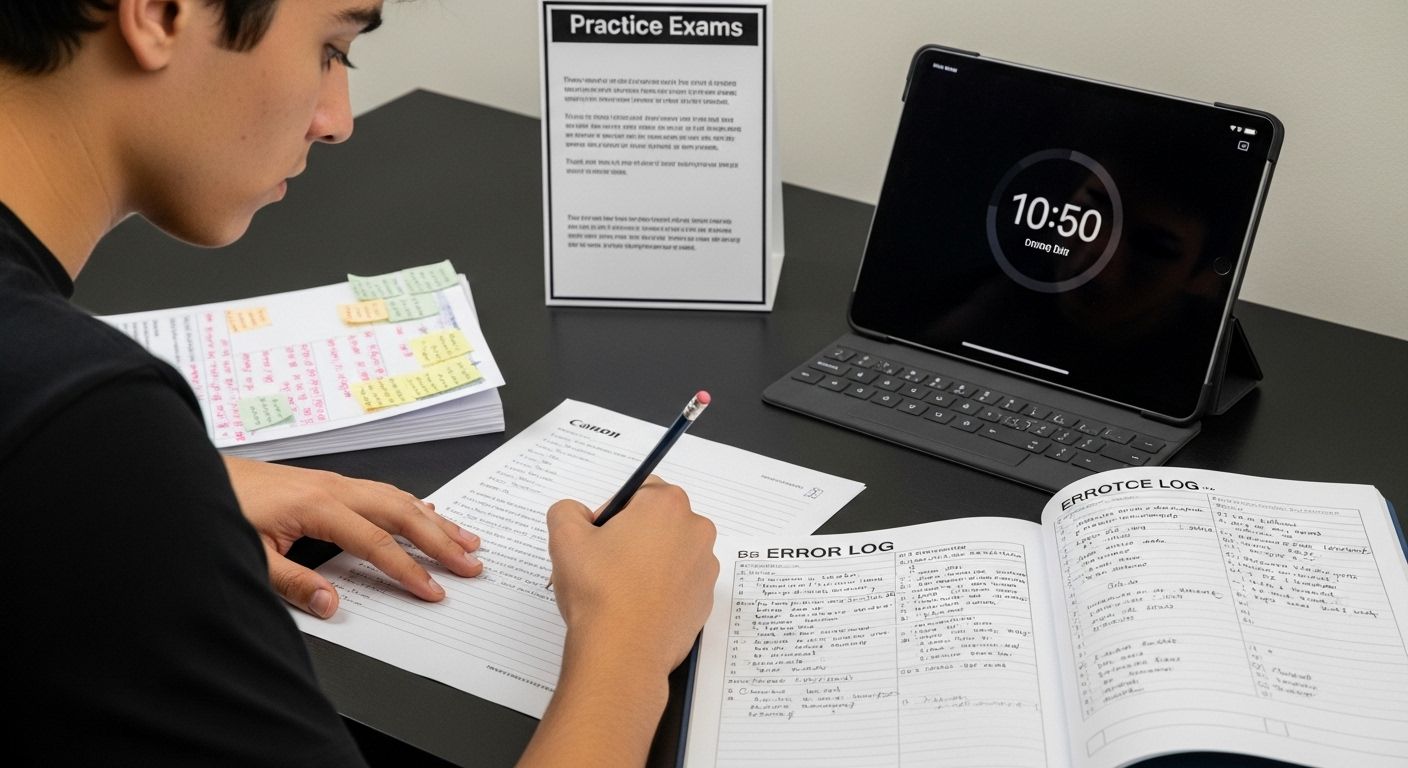
Step 6: Evaluate Your Progress and Adjust Your Strategies
Self-evaluation is the critical bridge between learning and mastery. Without honest reflection, even the most diligent study efforts can become ineffective and stagnant. This step transforms your study approach from a rigid plan to a dynamic, responsive learning strategy that adapts to your evolving academic needs.
Begin by creating a comprehensive progress tracking system. Develop a detailed performance journal that goes beyond simple grade records. Document not just your test scores, but the specific study techniques you used, your emotional state during preparation, time invested, and areas where you struggled. This granular approach allows you to identify patterns that might be hindering your academic performance. For instance, you might discover that your concentration dips after two hours of continuous studying, or that certain study environments significantly impact your information retention.Uncover advanced learning improvement techniques to help refine your self-assessment process. Conduct a monthly review of your learning journal, looking for trends in your study effectiveness. Are specific subjects consistently challenging? Do certain study methods yield better results than others? Be prepared to make strategic adjustments. This might mean redesigning your study schedule, seeking additional tutoring, or experimenting with new learning techniques that align better with your learning style.
To verify the effectiveness of your evaluation process, establish clear, measurable benchmarks. These could include improvements in practice exam scores, increased confidence in challenging subject areas, or reduced study time with maintained comprehension. Look beyond numerical metrics and consider qualitative indicators like reduced test anxiety, improved understanding of complex concepts, and a more positive attitude toward learning.
Remember that progress is not linear. Some study strategies will work brilliantly, while others might fall short. The most successful students view this process as continuous experimentation, remaining flexible and open to change. Your ability to honestly assess your learning, recognize areas for improvement, and proactively adjust your approach is the true marker of academic growth.
Struggling to Turn Study Tips into Real Exam Success?
Tired of scattered efforts and last-minute cramming leaving you feeling unprepared and anxious? You are not alone. Many students face challenges like inconsistent study routines, lack of effective review sessions, and difficulty choosing techniques that actually fit their learning style. Our feature on exam preparation highlights how transformative targeted strategies can be. Yet, making real progress often requires ongoing guidance and access to trusted resources that not only explain the “how” but also the “why” behind smarter study.
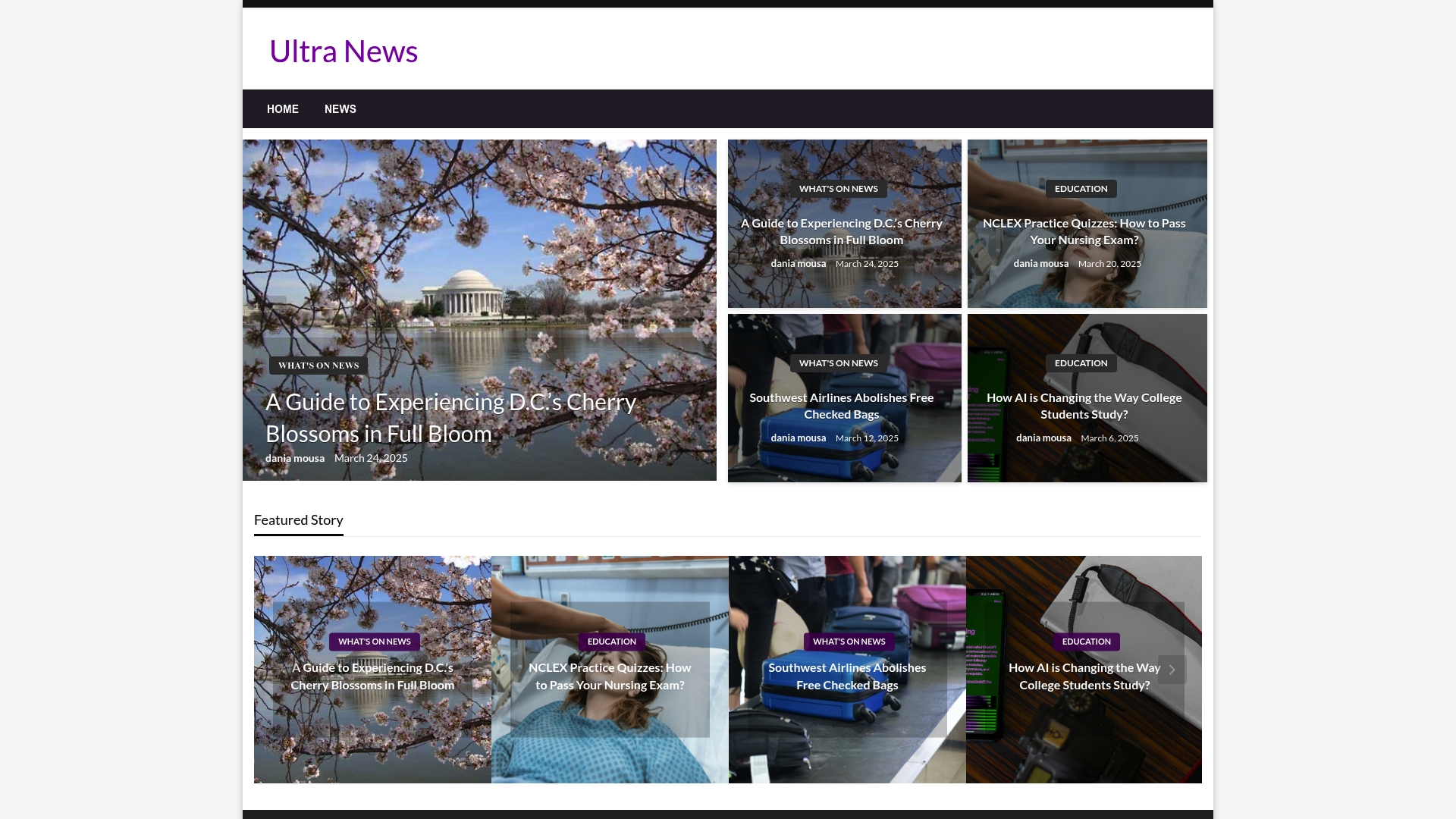
Unlock smarter ways to learn right now. Dive into exclusive guides and proven tips on Ultra News for up-to-date methods on mastering exams. Start exploring more educational breakthroughs and news updates that keep your momentum high, including our insights on best study habits for students and smart strategies for effective learning. Join thousands of readers who refuse to settle for average results. Visit Ultra News now to reshape your study journey before your next exam.
Frequently Asked Questions
How can I assess my current study habits before preparing for exams?
Start by keeping a study log for one week to track your study routines, comprehension levels, and distractions. Analyze the log to identify specific patterns that affect your performance, such as inconsistent study times or frequent interruptions.
What is the importance of creating a structured study schedule?
A structured study schedule helps to transform random study efforts into consistent, purposeful study sessions. It allows you to allocate specific times for each subject while respecting your individual energy levels and commitments, ultimately maximizing study efficiency.
How do I choose the right study techniques based on my learning style?
Identify whether you are a visual, auditory, reading/writing, or kinesthetic learner and select study techniques that align with your style. For instance, visual learners can use diagrams and mind maps, while auditory learners might benefit from discussions and recorded lectures.
What are effective methods for practicing active learning during review sessions?
Incorporate interactive techniques such as practice questions, self-quizzing, and teaching concepts to others. Create structured review sessions that simulate exam conditions to engage your brain actively and deepen your understanding of the material.
